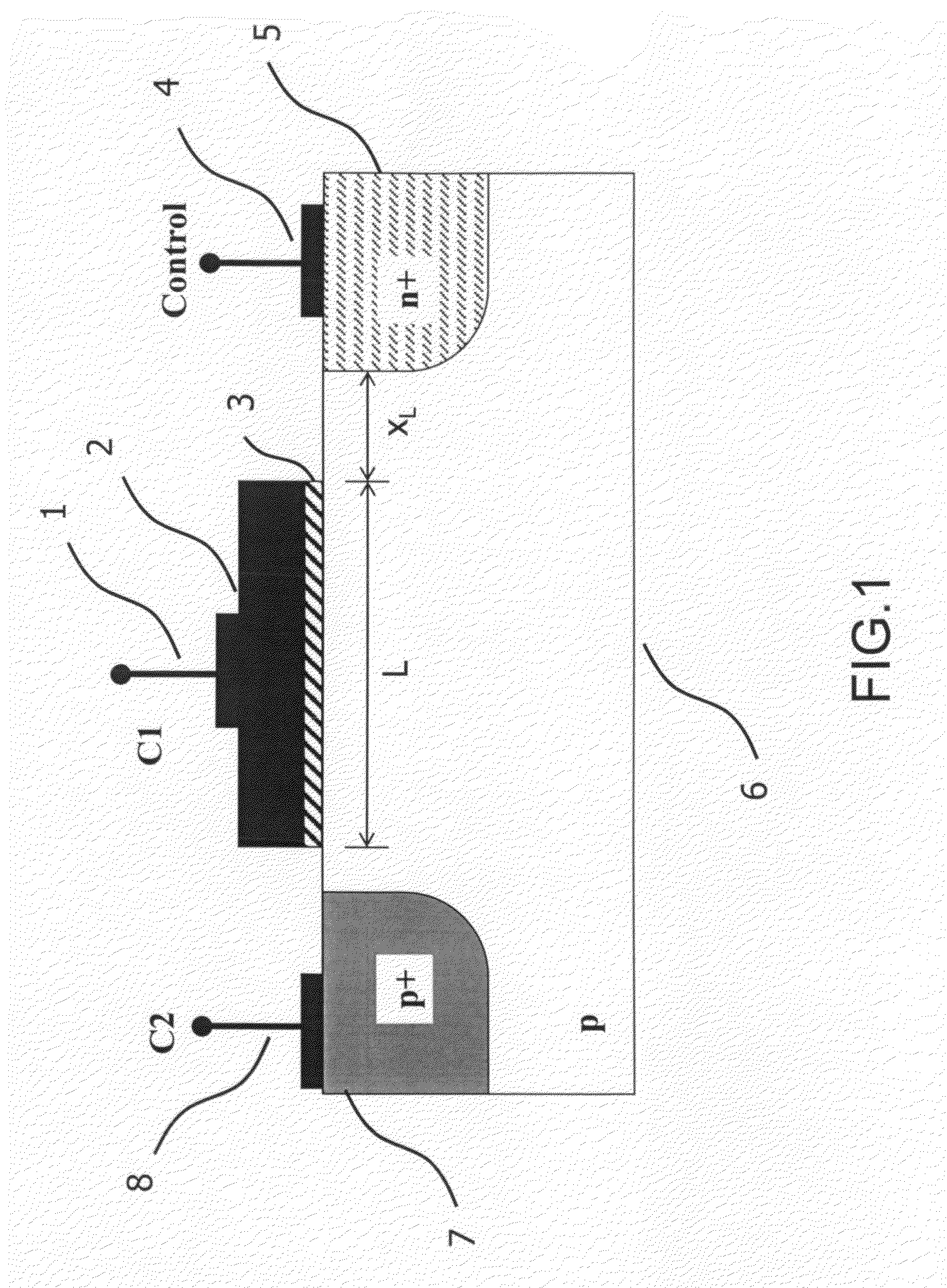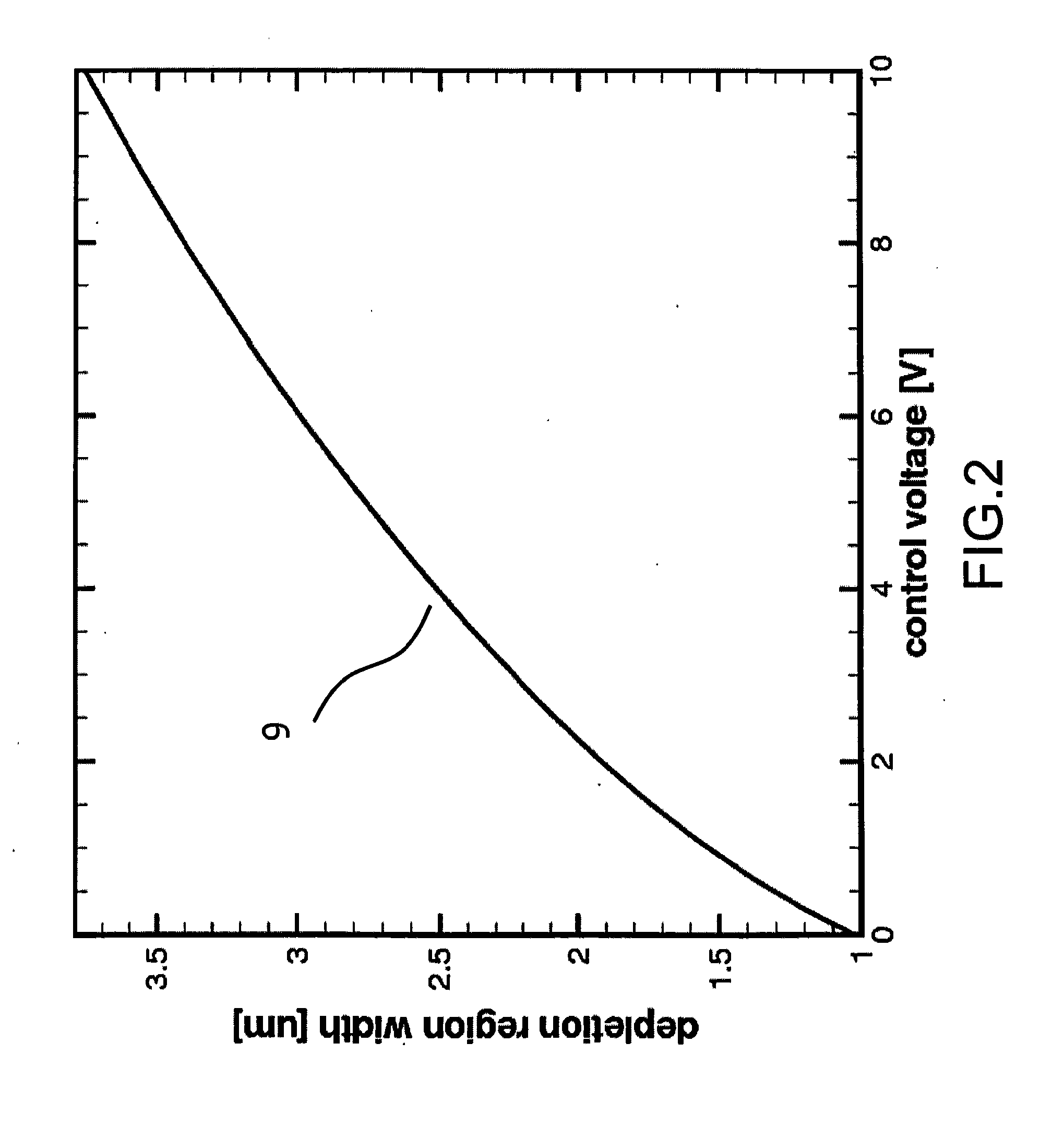Semiconductor variable capacitor
a variable capacitor and semiconductor technology, applied in the field of semiconductor capacitor structure, can solve the problems of inability to obtain an extremely high capacitance value, inability to add unacceptable levels of inter-modulation, and limited dynamic range, so as to improve the performance of the device, avoid distortion, and change the capacitance
- Summary
- Abstract
- Description
- Claims
- Application Information
AI Technical Summary
Benefits of technology
Problems solved by technology
Method used
Image
Examples
Embodiment Construction
A FIG. 1
[0100]FIG. 1 is showing the first embodiment of the invention. The n+-type region 5 defines the control terminal of the device whereas the region 2 and the p+ region 7 are the two terminals of the capacitor. The regions 3 corresponds to the capacitor dielectric layer, and region 6 is the p-type substrate of the device. xL is the distance between the capacitance plate 2 and the n+ control region 5, whereas L is the length of the upper capacitance plate 2. The lower capacitance plate is constituted by the substrate 6, and is connected to the C2 terminal 8 through the p+ region 7. The C1 electrode (or terminal) 2 may be built in poly-silicon or metal.
[0101]As it can be seen, the structure is very simple and the DC control voltage, which is applied between the control terminal 4 and the C2 terminal 8, never alters the DC voltage between the two main electrodes of the MOS capacitor.
[0102]The plates distance xL can be used to regulate the capacitance values range. The n+ region sh...
PUM
| Property | Measurement | Unit |
|---|---|---|
| Time | aaaaa | aaaaa |
| Electrical conductivity | aaaaa | aaaaa |
| Electric potential / voltage | aaaaa | aaaaa |
Abstract
Description
Claims
Application Information
 Login to View More
Login to View More - R&D
- Intellectual Property
- Life Sciences
- Materials
- Tech Scout
- Unparalleled Data Quality
- Higher Quality Content
- 60% Fewer Hallucinations
Browse by: Latest US Patents, China's latest patents, Technical Efficacy Thesaurus, Application Domain, Technology Topic, Popular Technical Reports.
© 2025 PatSnap. All rights reserved.Legal|Privacy policy|Modern Slavery Act Transparency Statement|Sitemap|About US| Contact US: help@patsnap.com



